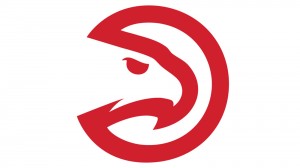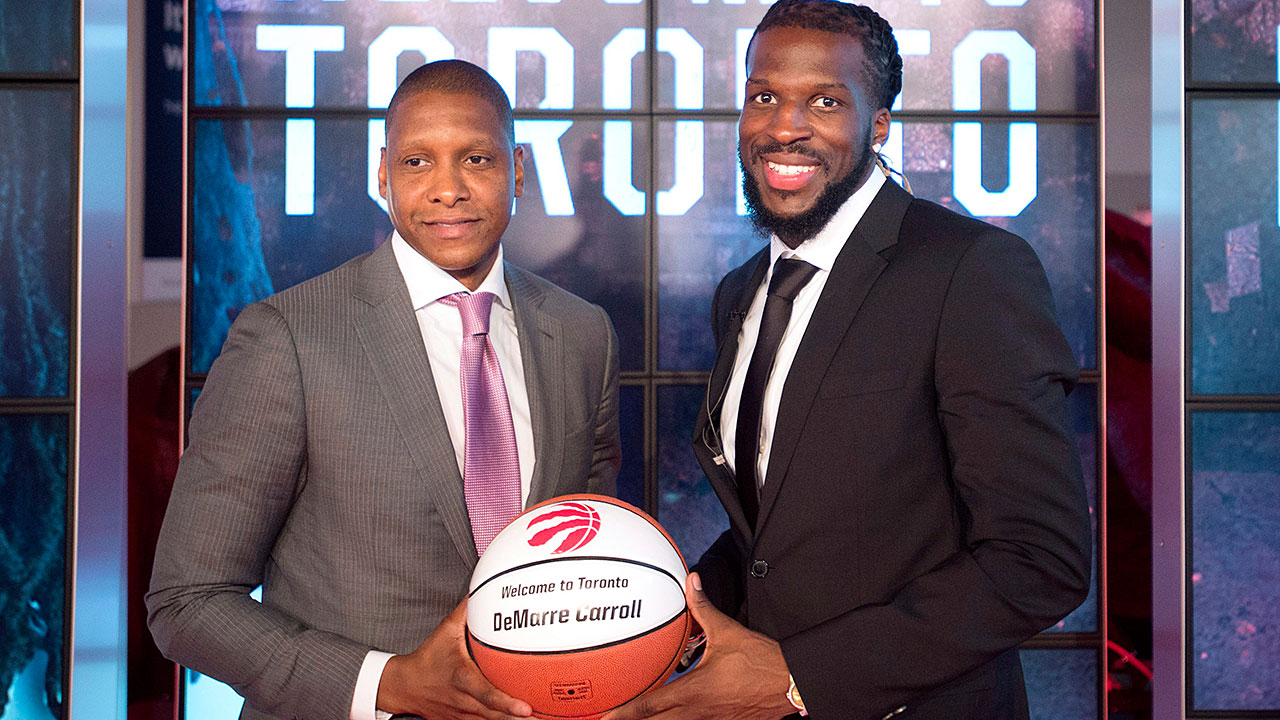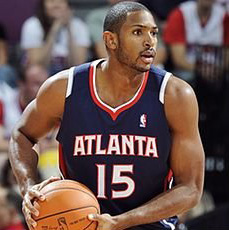 For almost a decade, the Atlanta Hawks remained stuck in a purgatory of NBA mediocrity.
For almost a decade, the Atlanta Hawks remained stuck in a purgatory of NBA mediocrity.
 Too good to select prospects in the early draft lottery and not good enough to compete deep into the playoffs, there was no obvious escape route. Although the team had the longest postseason streak in the Eastern Conference, Atlanta’s futile playoff track record overshadowed its strong core of dynamic starters and capable reserves.
Too good to select prospects in the early draft lottery and not good enough to compete deep into the playoffs, there was no obvious escape route. Although the team had the longest postseason streak in the Eastern Conference, Atlanta’s futile playoff track record overshadowed its strong core of dynamic starters and capable reserves.
Then a late summer scandal came in 2014, which eventually led to the sale of the team and the dismissal of general manager Danny Ferry. Before those conclusions were settled, wariness of the team’s leadership group spilled over into wariness of the team’s expectations on the court.
But seemingly out of nowhere, the Hawks became the feel good story of the NBA in 2014-2015. In coach Mike Budenholzer’s second year at the helm, he revolutionized a once isolation-heavy offense and reinvigorated the Phillips Arena crowd with unselfish ball movement, player movement and a barrage of shooters on the perimeter.
As the headliners of team basketball, superstar-less defiance and Kyle Korver’s Threezus-like consistency commanded national attention, the Hawks’ tumultuous summer transformed into a season of reinvention and rebirth. The Hawks won a franchise-record 60 games last season despite the litany of unfortunate distractions.
The ownership and management issues created a rocky start to the season, but the NYPD’s scuffle with Thabo Sefolosha, leading to his broken fibula, eventually proved to be the defining blow to the team’s depth. Two scandals, both seemingly racially motivated, bookended the Hawks’ historic season.
A 19-game winning streak and four All-Stars are no small feats. But now that expectations are sky high, can the Hawks repeat as the Eastern Conference’s top seed?
Here are the five things to look for with the Hawks this season.
1. How will DeMarre Carroll be replaced?
 All five of Atlanta’s starters in 2014-2015 shared the Eastern Conference’s Player of the Month award for January. Carroll, the glue guy, is the only one who does not return after signing a four-year, $58 million contract with Toronto. Now the Hawks have a question mark on the wing.
All five of Atlanta’s starters in 2014-2015 shared the Eastern Conference’s Player of the Month award for January. Carroll, the glue guy, is the only one who does not return after signing a four-year, $58 million contract with Toronto. Now the Hawks have a question mark on the wing.
Replacing Carroll without much cap space proved impossible, as Carroll offered Budenholzer an ideal complementary combination of strong defense, efficient perimeter shooting and a willingness to move without the ball.
So who are the candidates to replace Carroll? First dibs will go to Sefolosha. Some within the front office are quietly optimistic that Sefolosha might actually be an upgrade from Carroll in terms of filling Atlanta’s needs. While his 3-point shooting isn’t nearly as consistent as Carroll’s, his defensive abilities and rebounding skills are both upgrades over the Junkyard Dog.
In 87 minutes of court time Sefolosha shared with the other four projected starters, the Hawks thrived. When he directly replaced Carroll in the lineup, Atlanta outscored opponents by 5.8 points per 100 possessions. While it’s a slight downgrade from the 8.6 points per 100 possessions Atlanta’s starting squad outscored opponents by when Carroll was on the floor, Sefolosha’s lineup was a much more efficient rebounding team and committed fewer turnovers.
The Hawks and Sefolosha are both hopeful the NYPD legal matter will be resolved shortly. The trial in New York begins on Oct. 5 (during training camp) and, while Sefolosha hasn’t been physically cleared to play, he is optimistic that he will be ready both physically and mentally by the start of the regular season.
Besides Sefolosha, the Hawks have built depth at the wing with the additions of Tim Hardaway Jr. and Justin Holiday.
In a three-team deal, Atlanta traded its first-round pick to New York to acquire Hardaway. The move was curious, as Hardaway’s trade value was seemingly lower. Nonetheless, Budenholzer is confident that Hardaway’s combination of 3-point shooting and length can translate him into a capable role player under the proper tutelage.
RELATED: Hawks salaries and analysis
My favorite offseason move by the Hawks was the signing of Holiday. The older but less accomplished brother of Jrue, Justin played well in a limited role for the Warriors last season. In 64 games, Holiday demonstrated some nice form on his shot and averaged 13.9 points, 4.0 rebounds, and 2.6 assists per 36 minutes. If you’re looking for a Carroll-like breakout candidate, Holiday could be your man.
2. A revamped frontcourt off the bench?
 The Hawks’ weakest part of the rotation in 2014-15 was the reserve big men. After Pero Antic receded into a second-half shooting slump, the team relied heavily on undersized starters Al Horford and Paul Millsap to contribute significant minutes and effort on both sides of the ball. This dependency on the All-Stars eventually caught up to Budenholzer as both started to wear down physically and struggle in the playoffs.
The Hawks’ weakest part of the rotation in 2014-15 was the reserve big men. After Pero Antic receded into a second-half shooting slump, the team relied heavily on undersized starters Al Horford and Paul Millsap to contribute significant minutes and effort on both sides of the ball. This dependency on the All-Stars eventually caught up to Budenholzer as both started to wear down physically and struggle in the playoffs.
Tiago Splitter’s arrival could be just what the doctor ordered.
After all, it was only two seasons ago that Splitter was a starting big on a championship squad. Now he will be one of two nominal sixth men on this team. Splitter doesn’t offer the shooting touch that Budenholzer traditionally likes out of his big men but should complement the starting unit with superb passing skills out of the post and toughness on the glass.
Perhaps most important to what the Hawks need, though, is Splitter’s versatility on defense. Splitter is a terrific pick-and-roll defender. While he’s far more effective defending the roll man than the ballhandler in these situations, Splitter’s mobility and length enable him to switch onto smaller wings without fouling or being embarrassed.
Antic went back to Europe, and the Hawks will miss his veteran savvy. Elton Brand’s retirement will require other veterans to take on more active leadership roles in the locker room. Meanwhile, Mike Scott’s future with the Hawks is uncertain as he faces legal charges for possession of drugs. Scott is one the most popular players in the locker room, and his teammates will certainly be hoping for his return. On the court, however, Scott’s postseason shooting slump last season killed Atlanta.
The Hawks figure to look a lot more athletic and youthful off the bench with their big men. Walter “Edy” Tavares is a 7-3 long-armed giant but looked to be at least a year away during an up-and-down Summer League. Mike Muscala, meanwhile, figures to see significant minutes in the rotation after intermittent stays in the D-League and Atlanta in 2014. Muscala has worked on his perimeter shooting and already is one of the Hawks’ best rebounders.
3. Dennis Schroder’s emergence
This will be my third season driving the Dennis Schroder bandwagon, and if last season was a sign of things to come, I anticipate the wagon to get extremely crowded. Schroder has developed into one of the most devastating drivers in the NBA, converting on 47.1-percent of his 7.9 drives per game last season. Per-48 minutes, Schroder led the entire NBA with 12.2 points on drives.
Schroder is a skilled passer, although he can be a bit of a ball stopper. If there is a major criticism of Schroder, it is that he looks for his pass more willingly when he feels like he can get credited with an assist. It’s a bizarre paradox of selfish unselfishness that occasionally leaves a potential Hawks mismatch unexploited.
Still, Schroder is only 22 years old and – considering the sizable sophomore leap he took – I expect another big jump this season. The areas to work on are fairly obvious: Atlanta’s training staff purposely kept Schroder at 168 pounds last season with the idea to keep him light and explosive. This summer, the plan has been to slowly add some muscle to his frame so he can take on a bigger defensive responsibility while maintaining a similar level of explosiveness.
The biggest area of concern with Schroder, however, remains with his perimeter shooting. He’s wildly inconsistent yet extremely confident from the arc. While Budenholzer has to admire Schroder’s faith in himself, there are going to be opportunities for Budenholzer to lecture Schroder on the difference between an acceptable shot and a great shot. Still, Schroder is inching closer to league average from the perimeter. If he can get there, he will be an elite offensive weapon for years to come.
4. Al Horford’s expiring contract
 One unfortunate secret behind the Hawks’ success last season was that it came partially due to Al Horford’s absurdly discounted contract. At $12 million annually, Horford is one of the most underpaid players in the league and certainly will be looking for a pay increase next summer when he becomes an unrestricted free agent.
One unfortunate secret behind the Hawks’ success last season was that it came partially due to Al Horford’s absurdly discounted contract. At $12 million annually, Horford is one of the most underpaid players in the league and certainly will be looking for a pay increase next summer when he becomes an unrestricted free agent.
RELATED: THE TOP 25 FREE AGENTS OF 2016
By all accounts, Horford genuinely loves playing in Atlanta and has a deep trust for Budenholzer’s plan. Still, with every team in the league expected to have gobs of cap space next summer, Horford will have his pick of destination. It would take a seriously disappointing season in Atlanta to remove the Hawks from the frontrunner position in retaining their big man. But Atlanta’s situation with Horford isn’t all that different from Portland’s with LaMarcus Aldridge last season – and we know how that turned out.
5. Will Budenholzer’s strategies catch on elsewhere in 2015-16?
 In 2014-2015, Atlanta found two flaws with modern NBA logic and exploited those misunderstandings en route to 60 wins.
In 2014-2015, Atlanta found two flaws with modern NBA logic and exploited those misunderstandings en route to 60 wins.
It’s no coincidence that the Hawks attempted the most catch-and-shoot field goals per game in the NBA and converted on those chances at 41.8-percent, the highest rate in the league. The catch-and-shoot has been statistically confirmed as the most efficient type of jump shot in basketball, and Budenholzer constructed his lineups and rotations around the obvious premise that skilled spot-up shooters hoisting an onslaught of open catch-and-shoot opportunities would lead to efficient offense.
Budenholzer doubled down on his idea and virtually scrapped the pull-up jumper from his team’s shooting diet. By season’s end, Atlanta ranked 29th in the league in pull-ups attempted per game – taking more than twice as many catch-and-shoot attempts than pull-up attempts per game.
Moreover, the Hawks also developed a profound approach to offensive rebounding: instead of battling for second chance opportunities, Budenholzer constructed a game plan in which he conceded attempts on the offensive glass in an effort to reinforce the team’s transition defense. The Hawks averaged just 8.7 offensive boards per game last season, the least in the NBA by a fairly wide margin. The tradeoff, however, was that the Hawks boasted the best transition defense in the league, allowing just 1.015 points per transition possession.
But as the league gets smarter and coaches study more film, Budenholzer’s strategies will quickly become public knowledge. Will other teams start to mirror the Hawks’ approach in 2015-16? If so, will that negate the advantage the Hawks have been working with? We’ll have to wait and see.
PREDICTION: While other pundits are expecting a fair regression for the Hawks to around the 48-win mark, I expect Atlanta to finish the season with no less than 55 wins. Budenholzer learned a lot from his team and will come better prepared to ensure the team’s success can sustain into the postseason. Though Carroll’s energy and presence will be missed, the Hawks’ additions of Splitter, Holiday and Hardaway should do much to fix the issues with depth.
READ EVERY SEASON PREVIEW WITH OUR TEAM INDEX
Jacob Eisenberg is a contributing columnist to SheridanHoops.com. He specializes with the CBA and Salary Cap. Follow him on Twitter and check out his website.

The Hawks were built by Danny Ferry who was suspended for saying what we all know. Over and out.